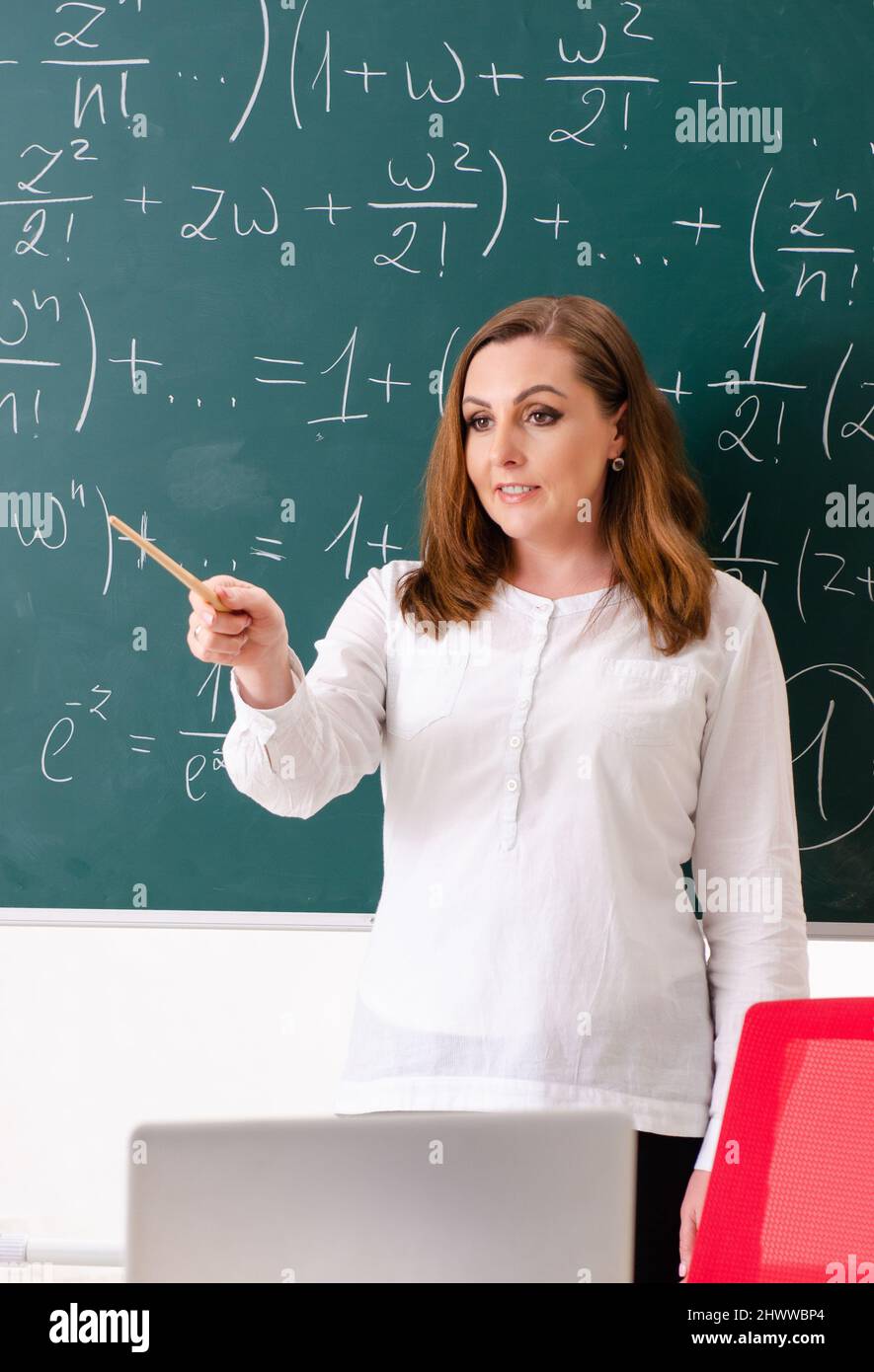Essential reasons experienced math teachers make excellent enterprise managers
Wiki Article
A Comprehensive Guide to Venture Mathematics Educators: Enhancing Professional Services and Strategic Collaborations for Industry Specifications
The duty of business math teachers is increasingly necessary in today's labor force. They act as a critical web link between theoretical ideas and useful applications in numerous markets. By developing strategic collaborations, these educators can align their curricula with market demands. This strategy not only enhances trainee learning but also prepares them for real-world challenges. Nonetheless, the effectiveness of these initiatives usually pivots on specific techniques and responses devices. What approaches can really connect this void?Comprehending the Function of Venture Math Educators
Venture math educators play a necessary duty in bridging the void between mathematical concept and useful application in organization contexts. They offer students with the necessary skills to evaluate information, make notified choices, and address intricate troubles that emerge in the business world. By integrating real-world situations right into their educational program, these teachers boost trainees' understanding of mathematical principles, highlighting their importance to everyday company operations.Enterprise math educators foster essential thinking and logical abilities, urging pupils to use mathematical methods to various industry-related difficulties. They frequently work together with sector professionals to guarantee that the educational program continues to be existing and lined up with market needs. This cooperation not only enriches the educational experience however likewise prepares trainees for successful jobs in areas such as financing, advertising and marketing, and logistics. Eventually, venture mathematics teachers act as important avenues, preparing the next generation of professionals to navigate the complexities of the company landscape successfully.

Structure Strategic Collaborations With Market
Building strategic collaborations with industry is crucial for enterprise mathematics educators seeking to boost their curriculum and trainee interaction. Recognizing key sector players and fostering collaborative educational program advancement can produce important discovering possibilities. Networking and relationship structure even more enhance these collaborations, ensuring alignment between academic goals and market needs.Determining Trick Industry Players
Developing solid connections with essential market gamers is important for educators seeking to boost maths curricula and straighten them with real-world applications. Determining these gamers includes comprehensive marketing research and networking within pertinent industries. Educators ought to concentrate on markets where mathematics is essential, such as money, modern technology, engineering, and health care. Involving with professional organizations, participating in industry seminars, and leveraging social media sites platforms can facilitate the exploration of possible companions. In addition, instructors should examine the impact and reach of these players within their respective fields, making certain alignment with instructional objectives. By fostering relationships with these key stakeholders, educators can get insights right into industry trends and demands, eventually improving the instructional experience and preparing students for future challenges.Collaborative Curriculum Advancement
Effective joint educational program development depends upon forming strategic partnerships with market leaders (experienced math teachers). By involving with professionals in pertinent areas, instructors can line up scholastic offerings with existing market demands and technical improvements. This partnership makes it possible for the consolidation of real-world applications right into the educational program, boosting trainee engagement and employability. Industry partners can give insights into necessary skills, devices, and methods that are essential for labor force readiness. Additionally, joint efforts can promote technology in training course style, making sure that curricula stay extensive and pertinent. Routine feedback from market stakeholders permits constant enhancement, guaranteeing that educational program adjust to evolving specialist criteria. Inevitably, these collaborations develop a symbiotic relationship where both instructors and sector advantage, enhancing the total top quality of education and workforce growthNetworking and Partnership Structure
Efficient networking and relationship structure are essential components for teachers seeking to create tactical partnerships with industry. By actively engaging with sector experts, instructors can gain insights into present trends and workforce demands, guaranteeing that their educational programs stay pertinent. Developing links through meetings, workshops, and collective tasks promotes good understanding and trust fund. In addition, leveraging social networks systems and online discussion forums can broaden the reach of these relationships, enabling continual dialogue. As teachers build networks, they produce chances for teaching fellowships, mentorships, and resource sharing, which can considerably boost pupil discovering experiences. Ultimately, solid collaborations with industry not just profit teachers and their institutions but likewise contribute to the development of a competent workforce straightened with market criteria.Lining Up Curriculum With Sector Standards
A comprehensive method to lining up like it curriculum with market standards is important for preparing pupils for future jobs. This placement ensures that curricula fulfill the advancing demands of the labor force, equipping pupils with appropriate abilities and knowledge. Educators has to involve with industry specialists to identify vital competencies and emerging trends, incorporating these insights right into lesson strategies and evaluation methods.Cooperation with market stakeholders can lead to the growth of specialized training courses that address details requirements, promoting a much more receptive instructional environment. Consistently evaluating and upgrading curricula based upon sector responses aids preserve instructional relevance and rigor
Finest Practices for Enhancing Pupil Involvement

Interactive Knowing Techniques
Numerous interactive knowing techniques can considerably enhance trainee interaction in mathematics education and learning. These strategies consist of joint team work, where trainees deal with problems with each other, promoting interaction and critical reasoning. Integrating modern technology, such as instructional software and online platforms, permits for personalized understanding experiences and instant feedback. In addition, using hands-on activities, like manipulatives or interactive simulations, makes it possible for pupils to visualize abstract concepts, making them extra tangible. Gamification of lessons with affordable tasks or quizzes can inspire trainees and develop a vibrant learning setting. Moreover, incorporating storytelling with mathematical principles can aid contextualize lessons, making them much more relatable. By using these interactive strategies, instructors can cultivate an extra appealing and reliable mathematics learning experience, inevitably improving pupil end results.Real-World Problem Fixing
Integrating real-world analytical right into maths education acts as an effective method to improve pupil involvement. By providing pupils with authentic obstacles, teachers can promote important thinking and promote the application of mathematical ideas in practical contexts. Finest methods consist of collaborating with regional organizations to establish projects that mirror industry requirements, consequently motivating students to see the significance of their researches. In addition, including modern technology, such as data and simulations evaluation devices, can strengthen understanding and interest. Facilitating team work permits for diverse point of views, boosting team effort and communication skills. Normal reflection on these experiences can aid pupils attach their understanding with professional and individual ambitions, eventually developing an extra vibrant and engaging discovering atmosphere that prepares them for future difficulties.Ingenious Methods to Real-World Application
A variety of innovative techniques can significantly enhance check my reference the real-world application of mathematical concepts in education. One reliable technique is the assimilation of project-based understanding, where students deal with authentic problems that mirror sector obstacles. This not only fosters important thinking however additionally permits pupils to see the importance of mathematics in various contexts. Additionally, leveraging innovation, such as simulation software application and data analysis devices, can offer interactive experiences that grow understanding. Collective collaborations with regional companies can additionally connect the space between concept and method, using pupils opportunities for internships and real-life projects. Using gamification in math education and learning can also engage pupils by making learning more vibrant and pleasurable. These methods urge a society of expedition and innovation, eventually preparing students to use their mathematical understanding properly in their future careers. By embracing these approaches, teachers can cultivate a much deeper admiration for maths as an important device in real-world scenarios.Measuring Success: Results and Effect On Students
Success in maths education can be successfully measured via the results and impacts on pupils, particularly when innovative approaches are used. Assessment approaches such as standardized tests, project-based evaluations, and pupil feedback supply quantitative and qualitative data that show learning development. Enhancing educational program to include real-world applications fosters pupil engagement and demonstrates the importance of mathematical principles.Additionally, tracking long-lasting accomplishments-- such as university registration rates and job courses-- offers understanding into the performance of educational strategies. Cooperation with market partners can amplify these end results, making certain that the skills educated are lined up with labor force assumptions.
Additionally, examining trainee perspectives towards maths with studies can reveal shifts in assumption, highlighting renovations in confidence and rate of interest. Eventually, a detailed evaluation of both scholastic performance and individual growth is essential for comprehending the real effect of mathematics education and learning on pupils, leading future pedagogical practices.
Frequently Asked Inquiries
What Certifications Are Required to End Up Being an Enterprise Mathematics Educator?
To come to be a business math educator, one generally requires a relevant level, teaching qualifications, and experience in instructional approaches. Advanced certifications and a solid understanding of industry requirements are also beneficial for boosting professional efficiency.
How Can Educators Remain Updated on Sector Trends?
Educators can stay upgraded on industry fads by participating in seminars, taking part in expert development workshops, subscribing to pertinent journals, taking part in on-line discussion forums, and teaming up with industry specialists top article to share insights and ideal practices.What Financing Opportunities Exist for Mathematics Education And Learning Initiatives?
Numerous financing possibilities exist for math education campaigns, including government grants, private structures, corporate sponsorships, and city government programs. Educators can discover these alternatives to sustain innovative jobs and enhance trainee discovering experiences successfully.Exactly How Can Modern Technology Be Integrated Into Mathematics Curricula Properly?
Technology can be properly integrated right into mathematics educational program by utilizing interactive software, on-line resources, and online simulations. These devices improve interaction, foster collective discovering, and provide individualized feedback, eventually improving pupils' understanding and efficiency in mathematics.What Prevail Difficulties Encountered by Enterprise Mathematics Educators?
Enterprise math educators commonly encounter challenges such as limited sources, differing trainee ability degrees, resistance to curricular modifications, incorporating modern technology successfully, and guaranteeing placement with industry criteria while cultivating involvement and understanding among varied learners.Enterprise mathematics teachers foster vital thinking and logical abilities, motivating pupils to use mathematical techniques to different industry-related obstacles - experienced math teachers. Structure tactical partnerships with sector is important for venture math educators looking for to boost their curriculum and trainee involvement. An extensive approach to lining up curriculum with sector standards is vital for preparing students for future professions. Finest practices consist of collaborating with neighborhood organizations to develop projects that show industry requirements, consequently encouraging pupils to see the relevance of their studies. One efficient approach is the combination of project-based learning, where pupils tackle genuine issues that mirror industry difficulties
Report this wiki page